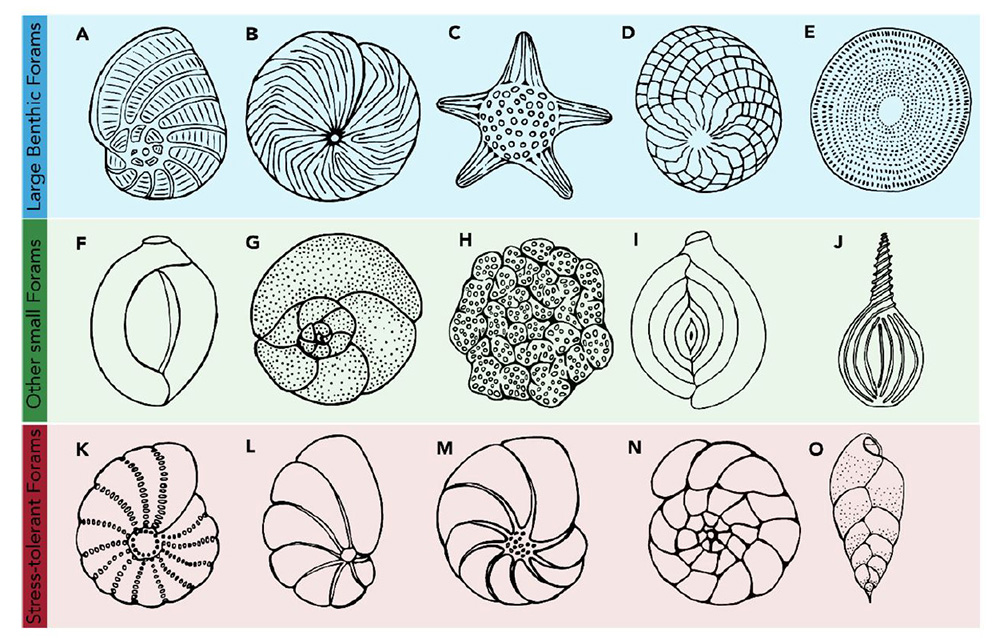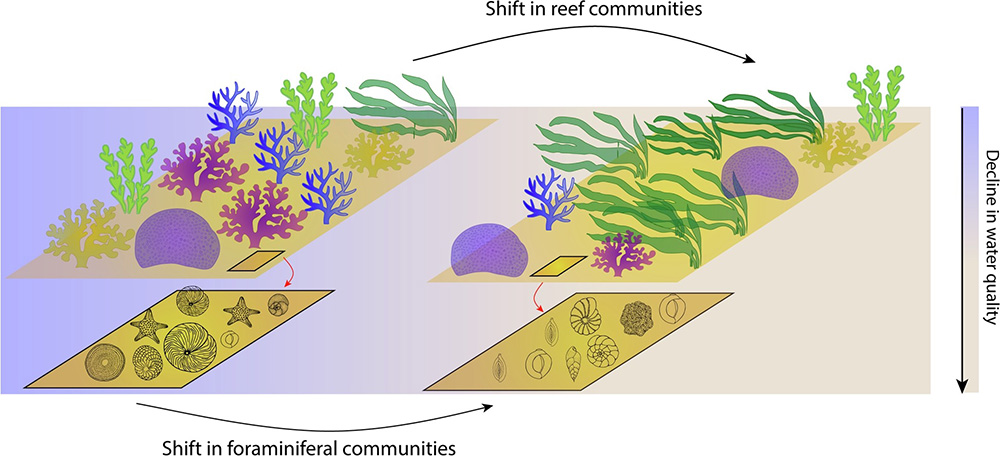Written by Kristen Kusek, Former Communications Director for USF CMS
Dr. Pamela Hallock Muller, geological oceanography professor at the USF CMS, pioneered the use of foraminifera – or forams – as indicators of water quality for coral reefs. That was more than 16 years ago and, it seems, the Foraminifera in Reef Assessment and Monitoring (FoRAM) Index — FI for short — is here to stay.
A study reported recently in Environmental Pollution outlines the strengths and limitations of the FI, which was first developed based on studies in the Atlantic and Caribbean. It also includes recommendations that ensure the FI remains a powerful, relatively simple, and low-cost reef-monitoring tool for use worldwide.
This is especially important as coral reefs continue to decline at alarming rates worldwide. Reef managers need reliable tools to quickly assess the health of a reef, including the potential for recovery after a natural disaster or the likelihood of success after a coral transplant program.
Fee-FI-Fo(ram)-Fun
Forams are single-celled organisms that build shells out of calcium carbonate or tiny
grains of sand. Scientists estimate that 4,000 species exist and they are the most
abundant shells found on the seafloor around the world. They range in length from
100 micrometers to 20 centimeters—about one-tenth the width of a pencil point to nearly
the width of a standard piece of paper.

In short, the FI works because the type of foram that grows in a certain coastal environment depends upon factors such as food supply and salinity of the water. The FI breaks forams into three basic categories: specific fast-growing forams that dominate in areas characterized by sewage, agricultural runoff, and other signatures of human activities; small forams that require water that is well oxygenated and close to normal ocean salinity; and larger forams that dominate in tropical and subtropical coral reef ecosystems.
The study’s authors are Dr. Martina Prazeres from the Marine Biodiversity Group in the Netherlands; CMS alum Dr. Michael Martinez-Colon, who is based at Florida A&M University; and senior author Hallock.
